
Unreal Tournament is a first-person arena shooter video game developed by Epic Games and Digital Extremes. The second installment in the Unreal series, it was first published by GT Interactive in 1999 for Windows, and later released on the PlayStation 2 and Dreamcast by Infogrames in 2000 and 2001, respectively. Players compete in a series of matches of various types, with the general aim of out-killing opponents. The PC and Dreamcast versions support multiplayer online or over a local area network. Free expansion packs were released, some of which were bundled with a 2000 re-release: Unreal Tournament: Game of the Year Edition.

Warcraft III: The Frozen Throne is the expansion pack for Warcraft III: Reign of Chaos, a real-time strategy video game by Blizzard Entertainment. It was released worldwide on July 1, 2003, for Microsoft Windows and Mac OS X. The Frozen Throne builds upon the story of Reign of Chaos and depicts the events after the main game's conclusion. The single-player unfolds from the perspective of two new protagonists—the Night Elf warden Maiev Shadowsong and the Blood Elf prince Kael'Thas—as well as returning protagonist Arthas Menethil. Additionally, the expansion contains Act I of a separate Horde campaign that is independent from the main storyline with Blizzard releasing Acts II and III via patch in December 2003, taking in player feedback of Act I when developing these chapters.

Unreal II: The Awakening is a first-person shooter video game developed by Legend Entertainment and published by Infogrames under the Atari brand for Microsoft Windows, the game was later ported to Microsoft's Xbox console by Tantalus. It is the sequel to the 1998 video game Unreal and part of the franchise of the same name. Cliff Bleszinski was an executive producer for the title.

Counter-Strike: Condition Zero is a first-person shooter video game developed by Ritual Entertainment, Turtle Rock Studios, and Valve, and published by Sierra Entertainment and Valve. The follow-up to Counter-Strike (2000), it was released in March 2004 for Windows. Condition Zero utilizes the GoldSrc engine and has a multiplayer mode, which features updated character models, textures, maps and other graphical tweaks. It also includes two single-player campaigns; Tour of Duty and Condition Zero: Deleted Scenes.

Empires: Dawn of the Modern World is a 2003 real-time strategy video game developed by Stainless Steel Studios and published by Activision. Set in a world-historical period that extends from the Middle Ages to World War II, the game tasks players with guiding one of nine rival great civilizations to victory. The game contains both a single player campaign as well as multiplayer gameplay mode.
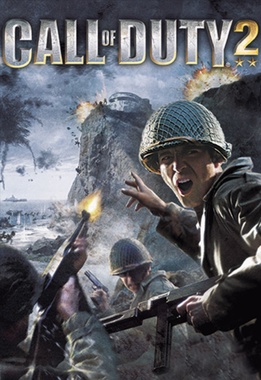
Call of Duty 2 is a 2005 first-person shooter video game developed by Infinity Ward and published by Activision in most regions of the world. It is the second installment of the Call of Duty series. Announced by Activision on April 7, 2005, the game was released for Microsoft Windows on October 25, 2005, and as a launch title for the Xbox 360 on November 22, 2005. Other versions were eventually released for OS X, mobile phones, and Pocket PCs.
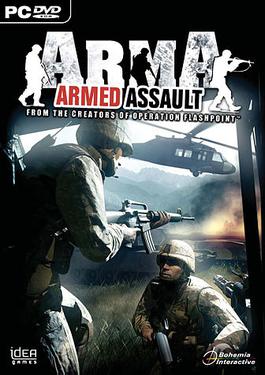
Arma: Armed Assault is a 2006 tactical shooter simulation video game developed by Bohemia Interactive and published by 505 Games in Europe and Atari in North America for Microsoft Windows. It is the first installment in the Arma series and is a spiritual successor to the 2001 video game Operation Flashpoint: Cold War Crisis, which was also developed by Bohemia. Set on the fictional Atlantic island of Sahrani, the game follows United States Armed Forces military advisors as they are caught in the midst of a conflict between the two rivalling nations on the island.
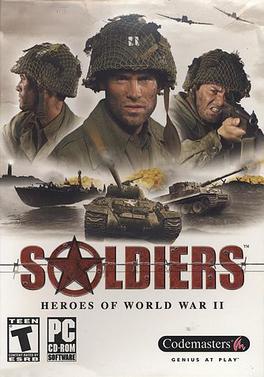
Soldiers: Heroes of World War II is the first in a series of real-time tactics video games set in World War II, developed by or under the supervision of Ukrainian company Best Way.
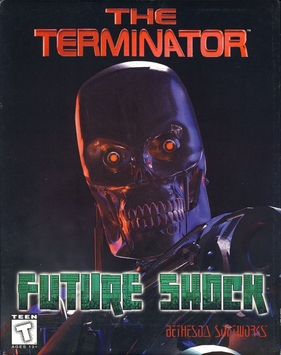
The Terminator: Future Shock is a 1995 first-person shooter video game by Bethesda Softworks based on The Terminator franchise. It received generally positive reviews. A sequel, Skynet, was released in 1996.
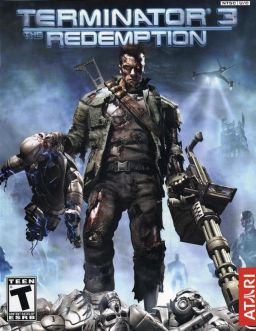
Terminator 3: The Redemption is an action-adventure video game based on the 2003 film Terminator 3: Rise of the Machines. Developed by Paradigm Entertainment and published by Atari in 2004, the game was released for the PlayStation 2, Xbox, and GameCube. Terminator 3: The Redemption received "mixed or average" reviews, according to Metacritic. While it was praised for its graphics and considered an improvement over an earlier game, the gameplay was criticized for being linear, repetitive, and difficult.

BattleSphere is a space combat simulation video game developed by 4Play for the Atari Jaguar. The game was released in 2000, with the enhanced edition BattleSphere Gold released in 2002. Set during a future war between seven alien races, the factions agree to confine their hostilities to a tournament with the galaxy at stake. Gameplay consists of five modes, each featuring distinct scenarios and objectives. Up to 16 players can participate in a deathmatch mode via local area network (LAN) play.

Skynet is a 1996 first-person shooter video game developed by Bethesda Softworks based on the Terminator franchise. It was intended as an expansion pack for the predecessor The Terminator: Future Shock, but was adapted into a standalone product.

The Terminator: Dawn of Fate is a 2002 action video game developed by Paradigm Entertainment and published by Infogrames for the PlayStation 2 and Xbox. It is based on the Terminator film series, serving as a prequel to the first two films.

Terminator 3: Rise of the Machines is a 2003 first-person shooter video game based on the film of the same title, with elements of hand-to-hand combat in the third-person perspective. It was developed by Black Ops Entertainment, with assistance work done by other Atari-owned subsidiaries. The game was published by Atari for PlayStation 2 and Xbox in 2003. An isometric shooter version was released for the Game Boy Advance during the same year. The game was also going to be released for GameCube, but was eventually cancelled.

Bomberman, also known as Dyna Blaster in Europe, is an action-maze video game originally developed and published by Hudson Soft for the PC Engine in Japan on 7 December 1990 and later in North America for the TurboGrafx-16 by NEC in 1991. Belonging to the Bomberman franchise, it is a re-imagining of the first game in the series starring White Bomberman on a quest to rescue Lisa, the kidnapped daughter of his inventor Dr. Mitsumori, from the castle of Black Bomberman while defeating evil monsters and villains that work for him. The game was later ported to home computers, each one featuring changes compared to the original version. Conversions for other platforms were in development but never released. The title garnered positive reception from critics since its initial release on the PC Engine/TurboGrafx-16 and later on home computers.

Baldies is a 1995 real-time strategy video game developed by Creative Edge Software and originally published by Atari Corporation for the Atari Jaguar CD. It was later ported to the PC, PlayStation, Sega Saturn, and Macintosh. In the game, the player manages a community of Baldies in order to build structures, increase their population, and create weapons to fight against enemies known as Hairies. There are four classes of Baldies and each structure has specific properties to assist the player. Its gameplay combines strategy with simulation and god game elements. Up to four players can participate in a multiplayer mode via local area network (LAN) on PC.

Terminator Salvation is a third-person shooter action video game, released on May 19, 2009 to coincide with the release of the film of the same title on the same week. It was developed by The Halcyon Company's gaming subsidiary, Halcyon Games, along with Grin and published by Equity Games and Evolved Games. The game was Grin's last game and was released for Microsoft Windows, PlayStation 3, Xbox 360, mobile, and iOS.

Star Wars: Battlefront is a 2004 first and third-person shooter video game based on the Star Wars film franchise. Developed by Pandemic Studios and published by LucasArts, it is the first installment in the Star Wars: Battlefront series. It was released in September 2004 for PlayStation 2, Xbox and Windows to coincide the release of the Star Wars Trilogy DVD set. Aspyr released a Mac OS X port in July 2005, and a cellular phone version, Star Wars Battlefront Mobile, was released on November 1, 2005.

Terminator: Resistance is a 2019 first-person shooter game developed by Teyon and published by Reef Entertainment for PlayStation 4, Windows, and Xbox One. It is based on the Terminator franchise, set during the original future war depicted in the films The Terminator (1984) and Terminator 2: Judgment Day (1991). It was released in Europe on 15 November 2019. In the United States, the Windows version was released a day earlier through Steam, while the other versions released on 7 January 2020. The game received generally mixed reviews from critics. An enhanced version for PlayStation 5 was released on 30 April 2021 and for Xbox Series X/S on 27 October 2023.



















